Several people have contacted me over the past week asking me where I buy my manuscript gesso from. The answer is that it is not, as far as I am aware, commercially available here in the UK, so I make my own.
Here’s the recipe:
8 parts of slaked plaster of Paris (calcium sulphate dihydrate)
3 parts of powdered lead carbonate – BEWARE, POISONOUS
1 part seccotine glue
1 part sugar, ground to a powder
A pinch of Armenian bole to colour the mixture
Distilled water to mix.
Measure all the ingredients with a measuring spoon, levelling the dry powders off with a palette knife. I mix my gesso on a granite slab. It is possible to make gesso with a mortar and pestle (not one that you are going to use for food preparation!) but it is more difficult to get it completely smooth.
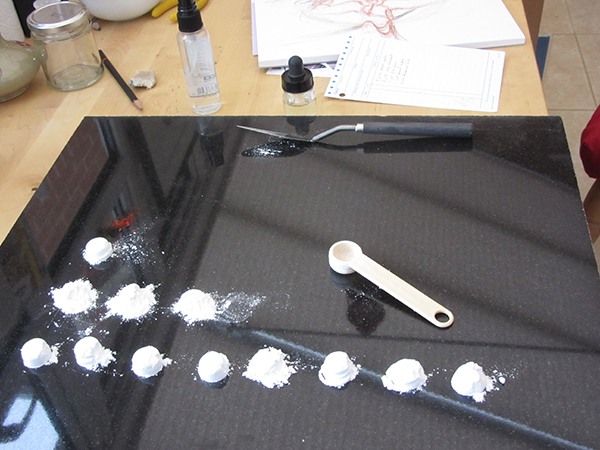
Mix, then add the measure of seccotine glue, taking care to scrape all the glue out of the measuring spoon.
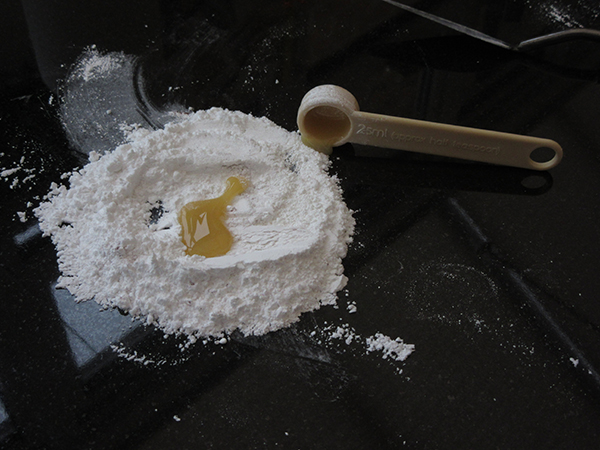
Add a little distilled water, then mix all the ingredients together. Wear a mask so that you minimise the amount of lead dust you inhale.
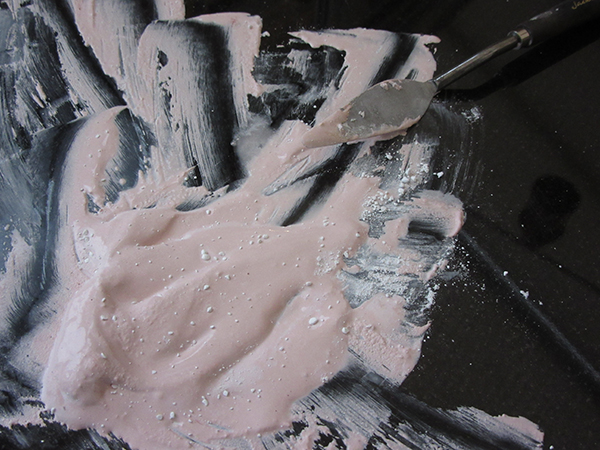
Grind with a muller until completely smooth, adding more distilled water as required. There should be no lumps of powder remaining.
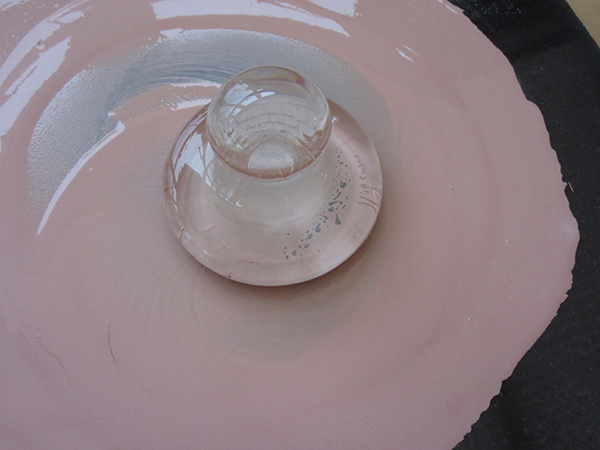
The whole process takes 1 1/2 to 2 hours, but the good news is that the gesso can be dried and kept for future use – just spoon small amounts on to an acetate sheet and allow to dry in a dust-free environment. Always wash your hands after you have finished and clear up responsibly. I do not allow any lead to be washed down the sink.
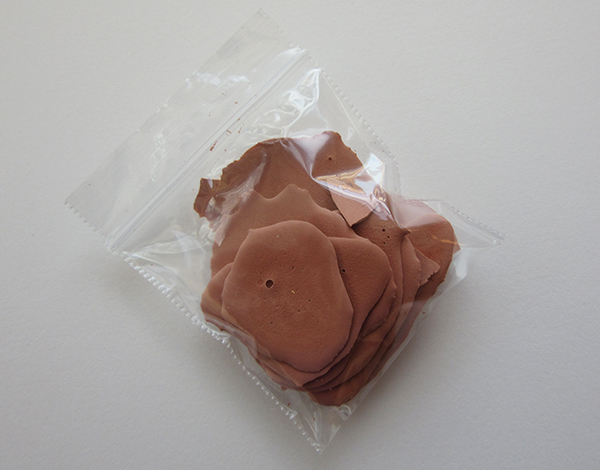
When needed, simply take a little gesso and re-constitute it with water.
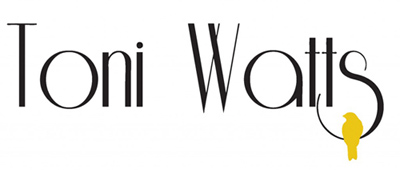
Hello Toni, once again thank you so much for a really inspirational course up at Higham…I am going to take the plunge and make some gesso! I currently have none of the kit so would appreciate the contact details of your suppliers if possible?
Very many thanks
V
Hi Victoria,
My granite slab came from a kitchen supplier – it was an offcut. The muller came from Cornelissens in London, but it might be worth looking at other suppliers. I buy my white lead (called flake white), seccotine glue and Armenian bole from Cornelissens. I’m a member of CLAS (The Calligraphy and Lettering Arts Society) and I buy slaked plaster from them, but it’s possible to slake your own. I’ll email you the handouts I had at Higham with more info.
It was great to meet you! Let me know how you get on.
Toni
Hello. Can I replace white lead for other product? Thanks.
Jerry Tresser makes a gesso which substitutes titanium oxide for white lead. I’ve never tried it, but you can buy it from John Neal Booksellers in America. Hope that helps!
I am a calligrapher. I have studied gilding with Peter Thornton and his recipe for gesso also substitutes titanium dioxide for the white lead. It works beautifully. I apply the gesso to the quill with a small paintbrush to avoid air bubbles. It’s helpful not to skimp on the gesso when laying it down.
Thanks David. Since my last post I’ve tried Jerry’s gesso and it does indeed work beautifully. It’s also (so he tells me) suitable for use by vegans, so it’s obviously possible to substitute the fish glue for a more modern equivalent as well. I continue to use my recipe, above, in spite of its toxicity, partly because it gives me good results and partly because I enjoy using ingredients that were written about in the early fifteenth century. Granted, my method of combining the ingredients is slightly different to that recorded by Cennino Cennini – but that’s anther story!
Hi Toni, just wondering how you manage to wash and clean up your equipment without disposing of the liquid down the sink?
Hi Jan – good question! I scrape every bit of gesso off the slab and save it (I often have to spray extra water on to disolve the dried bits) then give the slab a wipe over with a piece of damp kitchen roll. I do the same with the muller. It’s time consuming, but best for the environment.
Thanks, Toni. Have mixed up some gesso this afternoon and done the same!
Dear Toni, if I use the fish glue, should the part be the same as seccotine glue? Is that any specific ingredient in the glue or I can use any like Arabic gum instead?
Hi Fiona, Seccotine glue is fish glue, so yes, one part. Nobody uses Gum Arabic to make gesso as far as I know. I don’t think it would be sticky enough – although I’ve never tried it, so I can’t be sure!
Hi, Toni. I am wondering if I use titanium oxide to substitute white lead, should it be the same part as white lead? Also, how does humidity influence the effect of gilding since I live in Shanghai, a super humid place. Thank you so much.
Hi Wenji – yes, use the same amount of titanium as white lead. Humidity is always a challenge! High humidity will mean that the gesso takes a long time to dry, but it should be easy to get the gold leaf to stick. Low humidity gives the opposite problem – the gesso dries quickly but it’s more difficult to gild. Good luck with it all!
Thank you Toni. I will have a try!
What size of muller are you using? Cornelissen’s stocks 5 cm, 7 cm, and 10 cm.
It’s a 10cm muller, Janice